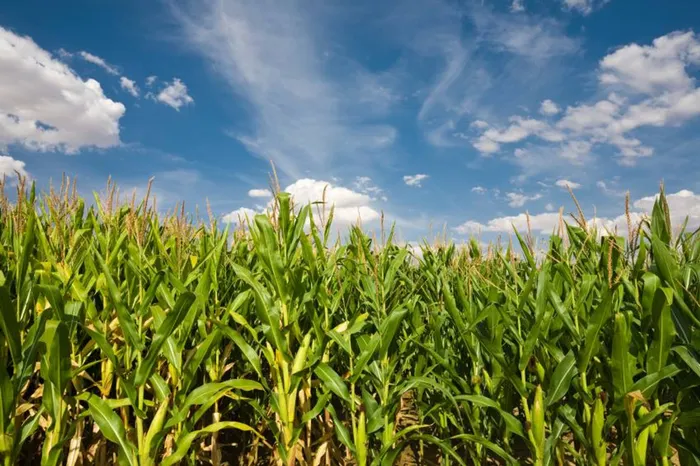Agricultural GDP fell unexpectedly and sharply in the third quarter

The bulk of the bumper harvest of the 2023 summer crops happened in the third quarter, but downbeat prices offset what could have been an excellent quarter. Photo: Facebook, Ministry of Agriculture and Livestock, Zambia.
Agricultural sector gross value added for third quarter surprised on the negative as it declined nearly 10%.
After an encouraging recovery of 2.8% quarter-on-quarter in the second quarter, South Africa's agricultural gross value added contracted by 9.6% in the third quarter.
Paul Makube, senior agricultural economist, FNB Commercial, said South Africa’s overall GDP growth fell short of expectations and contracted 0.2% in the third quarter, from a 0.5% rise in the second quarter.
Makube said despite some of the earlier indicators pointing to a potential upswing in Q3 agriculture GDP, the sector surprised on the downside with a biggest and sharp contraction of 9.6%.
“This was underpinned by a slowdown in economic activity for field crops, animal products, and horticulture products,” Makube said.
He said however, the bulk of the bumper harvest of the 2023 summer crops happened in the third quarter, but downbeat prices offset what could have been an excellent quarter.
“The total summer crop harvest was massive at 20.74 million tons which is 6.8% higher year-on-year (y/y) with South Africa’s biggest staple at 17.06 million tons and 6% higher y/y, and soybeans up 24% y/y at a record high of 2.76 million tons.”
On livestock products, FNB Commercial said they have seen a negative price growth for beef and pork with poultry mostly flat while overall livestock slaughter fell by 8% relative to the previous quarter.
“The livestock sub-sector also grappled with disease outbreaks such as the avian influenza in the poultry industry by mid-Q3 and given its sheer size of 42% of total agriculture gross producer value, any decline in the subsector activity makes a huge dent on overall agriculture growth.”
FNB Commercial said they still held a positive view on the long-term prospects for the agriculture sector on the back of the renewed impetus to open export markets following the conclusion of deals for exports of avocados to China and the reopening of the Saudi Arabian market for SA meat.
“Moreover, the seasonal outlook has improved significantly as the El Nino scare seems to have dissipated with forecasts still calling for rains into mid-December which bodes well for agriculture. Farmers are even optimistic in the field crop category with the first intentions to plant indicating an increase of 2% y/y in maize area, the country's biggest staple.”
Agricultural Business Chamber (Agbiz) chief economist Wandile Sihlobo said these figures were a surprise as the sector thought the ample field crop, whose harvest was a month behind the typical schedule, would still be reflected in the third-quarter data.
“For example, the 2022/23 maize harvest is at 16.4 million tons, which is 6% higher than the 2021/22 season's harvest and the second-largest harvest on record. Soybean harvest is at a record 2,8 million tons. South Africa's sugarcane crop is forecasted to be 18.5 million tons in 2023/24, up 3% y/y. Other field crops and fruit harvests were also decent this year,” Sihlobo said.
He said ultimately, the base effects and headwinds in the livestock and poultry industry weighed on the sector. The livestock and poultry industry, which accounts for nearly half the sector's value, has been hit by animal diseases such as foot-and-mouth, avian influenza and African swine fever, the economist said.
Agbiz said also worth noting was that South Africa's quarterly gross value-added figures tended to be quite volatile; hence, their communication always focuses on the annual performance.
“Importantly, with the downbeat growth figures of the recent quarters, we now think the sector could show mild contraction this year instead of the solid growth we initially anticipated.”
The agricultural organisation said the sector's key challenges were rising geopolitical tensions, deteriorating infrastructure, weakening municipalities, crime, and energy supply, which all influence farm profitability.
“The South African government, collectively with the private sector, should address these issues to support the sector in the long term.”
Also crucial for the outlook was El Nino's impact on the 2023/24 summer season, although they were optimistic that it would have a mild impact on the sector, and thus keep production at decent levels and, by extension, support growth, Agbiz said.
Absa Agribusiness agricultural economist Nkhensani Mashimbyi said they anticipated growth in the third quarter, based on the positive performance in field crops and the horticultural industry.
“The confidence in our resilience to load shedding, as reported in Q1, fuelled optimism for the rest of the year. However, it seems operational and logistical constraints have cast a shadow on performance. The spread of Avian influenza, reaching its peak in September, added pressure to the industry. Notable price increases, responding to the constrained supplies, were only observed in October,” Mashimbyi said.
Absa Agribusiness said they believed that agricultural performance would slow further due to notably lower field crop and red meat prices.
“Compounding this are the effects of operational and logistical challenges. For poultry, the higher prices are unlikely to offset effects of the significantly lower supply because in efforts to rebuild the poultry flock, producers had to import fertilised eggs at a significant cost.”
Mashimbyi said to mitigate the decline, South Africa needed to place its focus on enhancing local biosecurity measures and addressing inefficiencies at ports.
Related Topics: